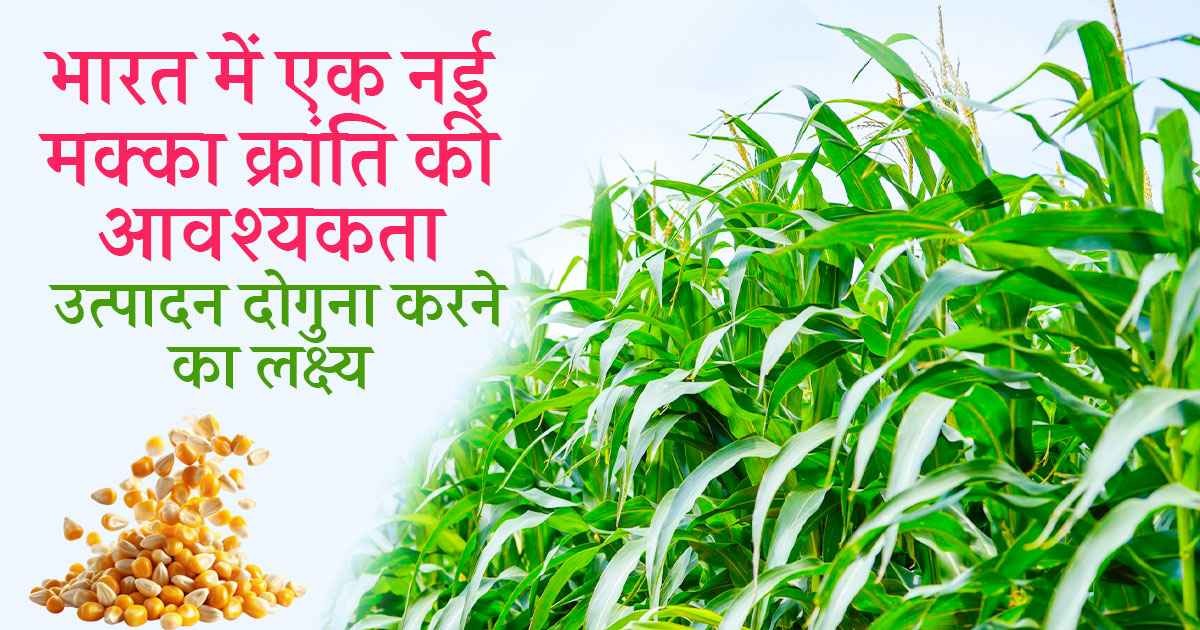
Maize, often referred to as the queen of cereals, is not only a key component in boosting ethanol production but is also becoming an essential raw material for the growing poultry, animal feed, starch, and other industries in India. According to estimates, India produced 34.6 million tonnes of maize in 2023-24 and has the potential to double this production in a cost-effective and sustainable manner to bridge the supply-demand gap in the shortest possible time.
Globally, maize is cultivated on 207 million hectares, producing over 1,218 million tonnes in 2022-23. The United States remains the largest producer, with an estimated 387.7 million tonnes, which accounts for nearly one-third of global maize production. The top three maize producers— the United States, Brazil, and Argentina— dominate global trade, exporting 197 million tonnes of maize. Most gasoline sold in the United States contains 10 percent ethanol, processed primarily in the Midwest, known as the maize bowl of the US.
India has recently introduced a new policy paradigm under the National Policy on Biofuels (NPB) to permit the blending of maize and grain-based ethanol. The target for ethanol-petrol blending has significantly increased from just 1.53 percent in 2013-14 to 10 percent in 2021-22, 12.1 percent in 2022-23, and is expected to reach 20 percent by 2024-25 and 30 percent by 2029-30. Currently, grain-based distilleries supply 494 crore liters of ethanol to oil marketing companies (OMCs) in 2022-23, primarily derived from sugarcane juice, molasses, and rice, which needs to be increased to 1,016 crore liters by 2024-25.
NITI Aayog estimates that the current ethanol production capacity in India, which stands at 426 crore liters from molasses-based distilleries and 258 crore liters from grain-based distilleries, is proposed to be expanded to 760 crore liters and 740 crore liters, respectively. This expansion is necessary to meet the expected demand of 1,016 crore liters of ethanol for EBP (Ethanol Blended Petrol) and 334 crore liters for other uses. To achieve the E20 ethanol targets by 2024-25, India will need to allocate approximately 60 lakh tonnes of sugar and 165 lakh tonnes of grains per annum. Notably, the task force on sugarcane and the sugar industry, chaired by Professor Ramesh Chand, Member (Agriculture) of NITI Aayog, has indicated that cereals, particularly maize, and second-generation (2G) biofuels with suitable technological innovations, offer a more environmentally friendly alternative feedstock for ethanol production.
Maize is a crop of opportunity for future generations, whereas continuous rice cultivation is lowering the water table in the Indo-Gangetic plains, causing economic and ecological distress. With the introduction of high-yielding single-cross hybrids, maize has become a profitable and suitable alternative to rice in irrigated conditions in Punjab, Haryana, and Western Uttar Pradesh during the Kharif season. Consequently, there are opportunities to expand maize cultivation in irrigated belts, extend maize cultivation during Rabi season in Bihar, grow maize in rice fallows during Rabi in West Bengal, Odisha, and the North-Eastern states, and cultivate spring maize after harvesting potato, green peas, and mustard in Northern India.
Saving Power and Water with Maize Cultivation: Maize cultivation can significantly increase risk-free cropping intensity and fits well into the diversification and intensification of maize-based cropping systems. Furthermore, maize cultivation with long-duration single-cross hybrids in areas with less than 1,200 mm rainfall, using existing irrigation systems through tube wells and canals, can offer high returns and save substantial government subsidies on power and water. Compared to rice, maize cultivation can save up to 90 percent of power and 70 percent of water.
Enhancing Productivity through Technology Adoption: Increasing per-day productivity in maize-growing states during different seasons is essential by adopting need-based technology suited to India's diverse agro-ecological conditions. India is uniquely positioned to grow a wide range of hybrids with maturity periods ranging from 75 to 150 days across different seasons. In India, the per-day productivity of maize varies between 40-80 kg, whereas in the US, it ranges from 70-100 kg for a long maturity period of 130-160 days. In the past, the US has achieved record productivity with 100 percent coverage of multiple insect and herbicide-tolerant biotech traits combined with high-yielding single-cross hybrids and high input production technology, surpassing a record yield of over 11 tonnes per hectare, calculated based on harvested crop area rather than the sown area.
Achieving 64-65 Million Tonnes of Maize Production for Ethanol by 2029-30:
Increasing maize production from 34.6 million tonnes to 42-43 million tonnes by 2024-25 and to 64-65 million tonnes by 2029-30 is feasible to meet ethanol requirements. This increase in maize production by an additional 16.5 million tonnes can be achieved by ensuring the supply of high-yielding single-cross hybrids. Offering minimum support price (MSP), assurance for procurement, and concessions in transportation from the farm to the factory are also essential steps. Mighty maize can achieve these targets by increasing its use as a multi-grain food crop, producing high-protein distiller's dried grains with solubles (DDGS), and meeting the E20 ethanol requirement. This will provide a major impetus towards achieving sustainable food, feed, and fuel security.